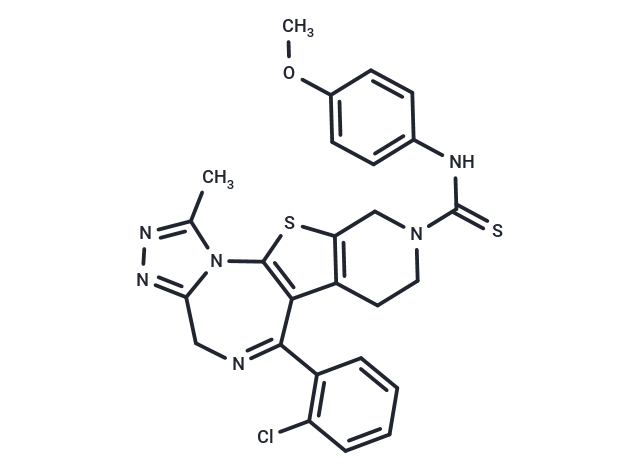Shopping Cart
- Remove All
 Your shopping cart is currently empty
Your shopping cart is currently empty

Rocepafant (LAU8080) is a platelet-activating factor (PAF) antagonist that attenuates hypoxic-ischemic brain damage in neonatal rats.Rocepafant inhibits tumor necrosis factor-Afa-mediated cytotoxicity in mouse L929 tumor cells.

| Pack Size | Price | Availability | Quantity |
|---|---|---|---|
| 1 mg | $46 | In Stock | |
| 5 mg | $106 | In Stock | |
| 10 mg | $156 | In Stock | |
| 25 mg | $303 | In Stock | |
| 50 mg | $413 | In Stock |
| Description | Rocepafant (LAU8080) is a platelet-activating factor (PAF) antagonist that attenuates hypoxic-ischemic brain damage in neonatal rats.Rocepafant inhibits tumor necrosis factor-Afa-mediated cytotoxicity in mouse L929 tumor cells. |
| Targets&IC50 | PAF receptor:0.74 nM |
| In vivo | Ten patients with active disease were treated for 4 weeks with a PAF receptor antagonist, Rocepafant, given orally (40 mg twice daily). The treatment period was followed by a 4-week follow-up period. Clinical indicators of disease activity significantly improved during the treatment period, with a progressive return to baseline values during the follow-up period. No significant change in laboratory variables was observed. The tolerance of the treatment was excellent, and no clinical or laboratory evidence of side effects was recorded. These results must be confirmed in a controlled study, but suggest an anti-inflammatory effect.[4] |
| Alias | LAU-8080, LAU8080, LAU 8080, BN-50730, BN50730, BN 50730 |
| Molecular Weight | 535.08 |
| Formula | C26H23ClN6OS2 |
| Cas No. | 132579-32-9 |
| Smiles | CC=1N2C3=C(C4=C(S3)CN(C(NC5=CC=C(OC)C=C5)=S)CC4)C(=NCC2=NN1)C6=C(Cl)C=CC=C6 |
| Relative Density. | no data available |
| Storage | Powder: -20°C for 3 years | In solvent: -80°C for 1 year | Shipping with blue ice. | |||||||||||||||||||||||||||||||||||
| Solubility Information | DMSO: 55 mg/mL (102.79 mM) | |||||||||||||||||||||||||||||||||||
Solution Preparation Table | ||||||||||||||||||||||||||||||||||||
DMSO
| ||||||||||||||||||||||||||||||||||||

Copyright © 2015-2024 TargetMol Chemicals Inc. All Rights Reserved.